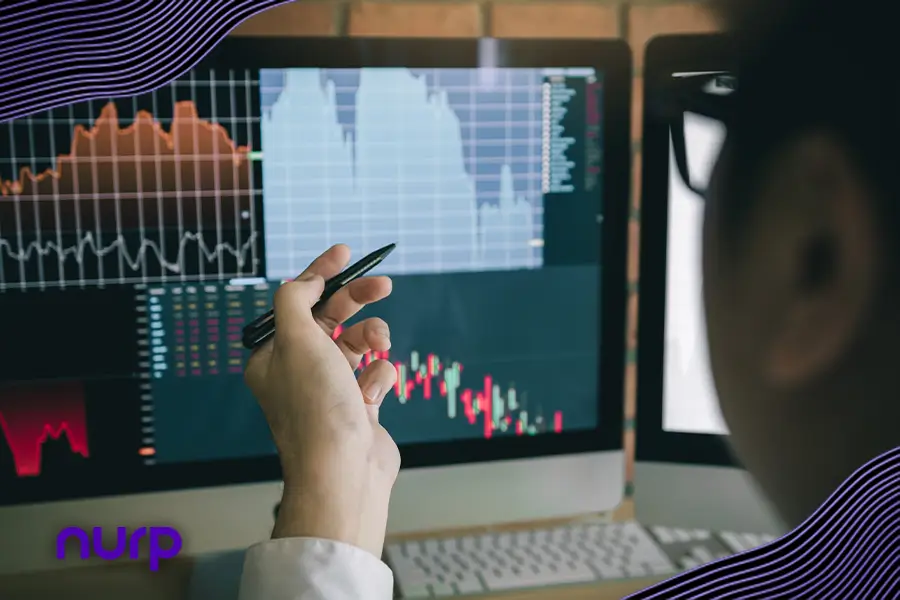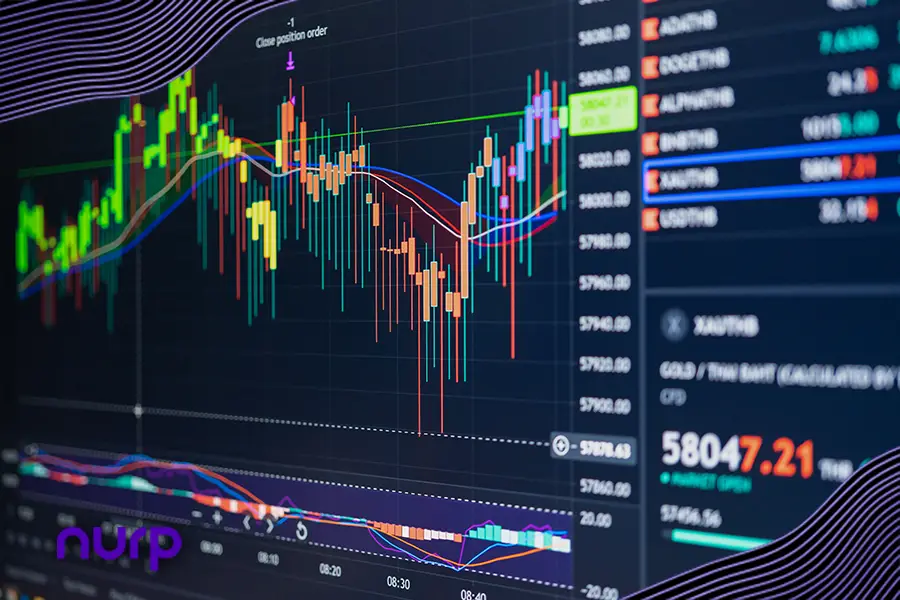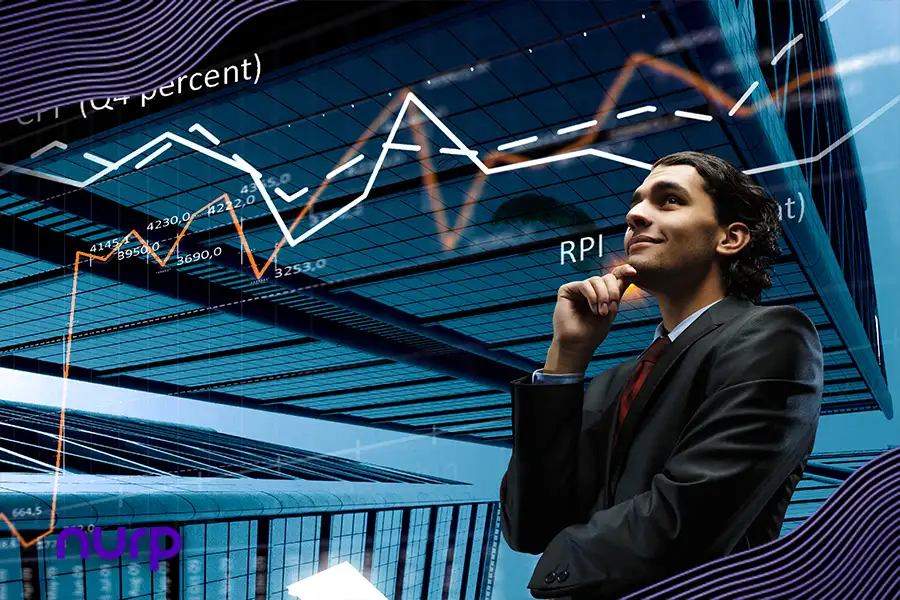Key takeaways:
Trend following merges with algorithmic trading to exploit market trends accurately, using machine learning for data analysis and risk management.
Algorithmic trading boosts trend following by enabling fast, unbiased trade decisions and continuous strategy enhancement.
It offers high return potential and diversification and is accessible anytime while noting potential risks like technical issues and market changes.
Emphasizing continuous learning and ethics is vital as AI and machine learning advancements evolve trading strategies.
The future of trading leans on technology, with ongoing innovation essential for success in the dynamic stock market environment.
The stock market is often described as a chaotic and unpredictable ocean where fortunes rise and fall with market movements. In this vast and ever-changing landscape, some investors seem to possess a secret that allows them to make profits, even amidst the chaos consistently. This secret is known as trend following, a strategy that has proven to be a game-changer for many successful investors.
Unraveling the Mystery of Trend Following
Trend following is a strategy traders employ to buy assets when their prices rise and sell them when they fall. At its core, trend following is based on the principle that prices move in trends, influenced by market psychology and external forces. By identifying these trends and riding the wave, trend followers can profit from the market’s natural ebb and flow.
One notable example of a successful trend follower is Richard Dennis, who famously turned a group of novices into millionaire traders known as the “Turtle Traders.”
By adhering to trend-following principles, these traders achieved remarkable success, proving that this strategy can yield substantial profits.
The Lesser-Known Secrets of Trend Following
Contrary to popular belief, trend following is not new. Its roots can be traced back to the late 1800s when traders recognized the potential of capitalizing on market trends. The critical components of trend following include identifying the trend, determining the entry and exit points, and employing stop-loss orders to manage risk.
However, one crucial but often overlooked aspect of trend following is the emphasis on risk management rather than prediction. Trend followers understand that it is impossible to predict market movements consistently. Instead, they focus on managing their risks by setting predetermined exit points and adhering to them, regardless of emotions or external pressures.
The Psychological Battle
Successful trend followers face a significant psychological battle in trading. The fear of loss and the greed for more profits can cloud one’s judgment and lead to impulsive decision-making. However, disciplined trend followers understand the importance of maintaining emotional balance and sticking to their predetermined system.
Following rules and strategies, trend followers safeguard themselves against impulsive and emotional decisions. This discipline allows them to stay on track even during market turbulence, increasing their chances of long-term success.
Tools of the Trade
As Trends follow, ers rely on various tools and indicators to aid their decision-making process. Moving averages, calculated by calculating the average price over a specific period, are commonly used to identify trends. Momentum indicators, such as the Relative Strength Index (RSI) or Moving Average Convergence Divergence (MACD), help traders gauge the strength of a trend.
In addition to these traditional tools, modern technology and software have revolutionized the following trends. Advanced algorithms and data analysis techniques empower trend followers with faster and more accurate insights, enabling them to make informed decisions.
Algorithmic Trading: The Next Frontier
Algorithmic trading represents the next frontier in trend following. This approach leverages technology to make the trading process more efficient based on pre-defined criteria. By removing emotional decision-making from the equation, algorithmic trading increases efficiency and potentially enhances profitability.
Algorithmic trading relies on computer programs that execute trades precisely, often within milliseconds, in response to specific market conditions. This technology-driven approach allows for rapid execution and taking advantage of fleeting market opportunities that human traders may miss.
The Fusion of Trend Following and Algorithmic Trading
The fusion of trend following with algorithmic trading has been a game-changer for many investors. By combining the principles of trend following with the speed and accuracy of algorithmic trading, investors can benefit from the best of both worlds.
The advantages of this fusion are evident. Algorithmic trading offers speed, allowing for the timely execution of trades. It enables traders to handle large volumes of transactions efficiently.
Accuracy is enhanced through sophisticated algorithms that analyze vast amounts of data. Additionally, the ability to backtest strategies provides valuable insights into their historical performance, aiding in developing robust trading systems.
Risks and Rewards
While trend following and algorithmic trading offer significant potential rewards, it is essential to acknowledge the associated risks. Technical failures, such as system errors or connectivity issues, can disrupt trading operations and lead to financial losses. Over-optimization, a phenomenon where trading strategies are excessively tailored to historical data, may result in poor performance in real-world conditions. Furthermore, unexpected market events can create volatility and impact trading outcomes.
Despite these risks, the rewards of trend-following and algorithmic trading are compelling. The potential for high returns attracts many investors, while the ability to diversify across different assets and markets mitigates risk. Moreover, disciplined trading based on predetermined criteria reduces emotional biases and increases the chances of long-term success.
The Importance of Continuous Learning
In the ever-evolving world of finance and trading, continuous learning is crucial for trend followers and algorithmic traders. Markets change, new trends emerge, and strategies need to adapt to stay effective. Investors need to keep informed about market conditions, economic trends, and technological advancements that can impact their trading decisions.
Fortunately, numerous resources are available for those looking to improve their knowledge and skills in trend-following and algorithmic trading. Books, online courses, webinars, and forums provide valuable insights and learning opportunities for experienced traders. Engaging with a community of like-minded individuals can foster discussions, idea-sharing, and the exchange of best practices.
Ethical Considerations in Algorithmic Trading
While algorithmic trading offers many benefits, it is essential to consider the moral implications of this approach. Using algorithms raises questions about fairness, market manipulation, and its potential impact on market stability. Regulators and governing bodies have actively monitored and implemented measures to ensure transparency and ethical conduct in algorithmic trading.
Investors and traders must be mindful of the ethical considerations related to algorithmic trading. It is crucial to adhere to legal and regulatory frameworks, maintain transparency in trading practices, and avoid actions that may harm market integrity.
The Future of Trend Following and Algorithmic Trading
As technology advances, the future of trend following and algorithmic trading appears promising. Machine learning and artificial intelligence are integrated into trading systems, allowing more sophisticated analysis and decision-making capabilities. These advancements can further enhance the accuracy and efficiency of trend-following strategies.
Additionally, the rise of cryptocurrencies and blockchain technology has opened up new avenues for trend-following and algorithmic trading. Cryptocurrencies’ decentralized nature and the availability of historical data provide unique opportunities for traders to develop innovative strategies.
The Importance of Risk Management
Effective risk management is a cornerstone of successful trend-following and algorithmic trading. While these strategies have the potential for high returns, they also come with inherent risks. Investors must implement robust risk management practices to protect their capital and mitigate potential losses.
Risk management in trend following involves setting appropriate stop-loss orders, sizing positions based on risk tolerance, and diversifying across different markets or asset classes. Algorithmic trading adds an additional layer of risk management through pre-defined rules and, often, rapid-fire execution that can quickly get portfolios into and out of trades, reducing the impact of emotional decision-making.
By diligently monitoring and managing risk, investors can maintain a sustainable approach to trend-following and algorithmic trading, preserving capital during market downturns and capitalizing on profitable opportunities.
The Human Element in Algorithmic Trading
While algorithmic trading relies on technology, the human element still plays a crucial role. Traders and investors need to actively monitor and evaluate their algorithmic systems, ensuring they are performing as expected and making necessary adjustments when required. Intervention may be necessary when market conditions change rapidly, or unexpected events occur. Traders must stay vigilant and be prepared to override or adjust their algorithms.
Conclusion: Why Algorithmic Trading Could Be Your Investment Vehicle
The evolution of trends following algorithmic trading has transformed how investors navigate the financial ocean. With its ability to streamline and execute trading decisions quickly and precisely, algorithmic trading has proven to be a powerful tool for trend followers. By combining the principles of trend following with advanced technology, investors can position themselves for success in the ever-changing landscape of the stock market.
If you want to learn more about algorithmic trading and how it can help investors do better in present market conditions, go ahead and review this case study now.
The post The Art of Trend Following in the Financial Ocean first appeared on Nurp.com.






